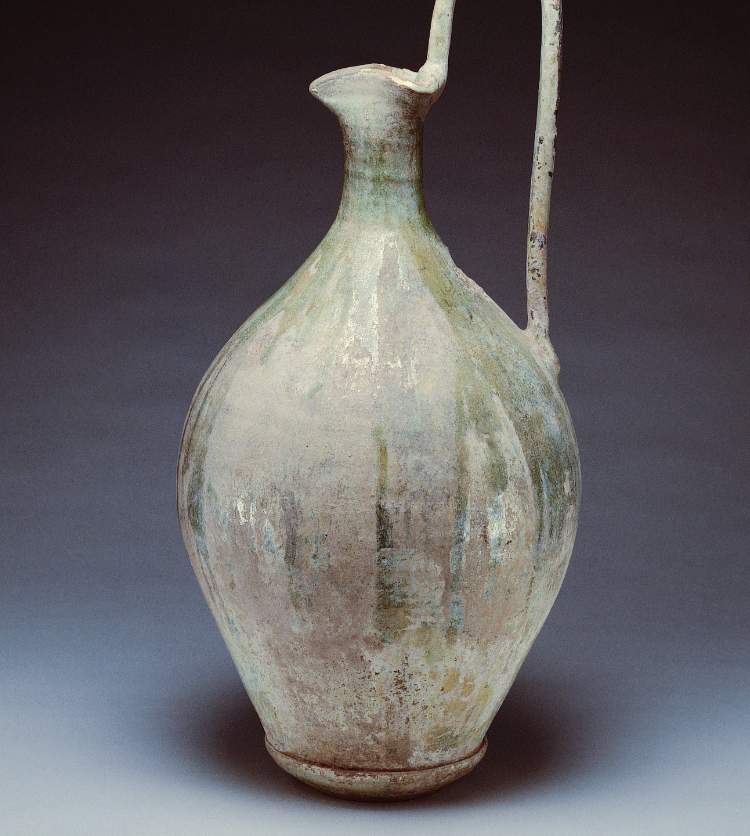This vessel for holding liquids has a slender neck and a shoulder that cuts downwards, giving it an elegant look. The broad belly adds a feeling of steadiness, while the sense of elevation created by the high-arching handle makes the whole vessel appear light and nimble. Green glaze has been applied to the vessel. Although much of the glaze has fallen off, a mottled beauty can still be perceived.
Ewers in the Tang dynasty were usually plump with short mouths and plain, thick shapes. This uniquely shaped artifact, however, is rather rare. The natural mottled glaze adds to its important historical, cultural, and artistic value. As such, it has been designated a significant antiquity.
The Chinese word for ewer can refer to two different types of vessels. The first, called a water-dropper, is a small and delicate container for water usually used for preparing ink, most of which are made of jade or ceramic.
This vessel, on the other hand, is large and resembles a type of metal ewer that was popular in the Sasanian Empire. Because of the prosperous Silk Road during the Tang dynasty, frequent exchanges between China and the West took place. Foreigners brought many gold and silver vases and jars to pay tribute to the imperial court, and in turn, Tang dynasty artisans were inspired to try new designs. This object is proof of the commercial and cultural exchanges and mingling with foreign states during the Tang dynasty.
